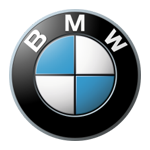Flutter Training in Ahmedabad
LogicRays Academy provides real-time and placement
focused Flutter training in Ahmedabad. We offer Flutter
developer training for freshers and IT professionals.
This Flutter development course includes basic to advance
level of Flutter(Dart) programming, Flutter Language Environment,
Flutter fundamentals, App creation, object-oriented programming,
publishing over play store and app store , materials, widgets in flutter,
Firebase, create live application, Debugging the Flutter App, Build Responsive &
Adaptive user interface, Building Multi Screen Apps & Navigating between Screen,
Connection & backend sending HTTP requests, Push Notification & more.
We have designed our Flutter training course content and syllabus based on industry requirement to achieve every student’s career goal.
We have specialized Flutter instructors teaching in Core Flutter(Dart) till advance, Android studio, vscode require to develop highly scalable and secure Mobile, iOS Applications.




















